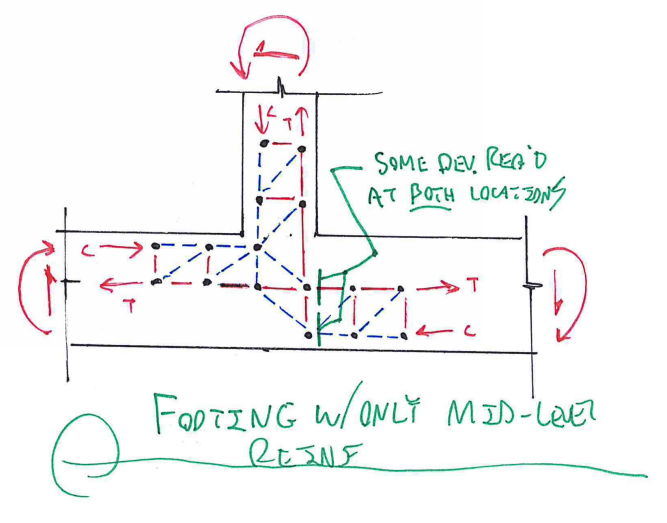PostFrameSE
Structural
I'm designing a retaining wall (inverted T design) and my question is in regards to how much of the footing I can use to develop my wall reinforcing. I'm thinking that the development length of my vertical reinforcing needs to be measured from my hook to the top layer of reinforcing in the footing.............not the top of the concrete footing correct? So, for example, if I have an 18" deep footing with a layer of reinforcing 3" from top and bottom, the most development length I can count on for my vertical bars tying into this would be 18"-3"-3" = 12" rather than 18-3" cover at bottom =15" right?

![[bigsmile] [bigsmile] [bigsmile]](/data/assets/smilies/bigsmile.gif)
